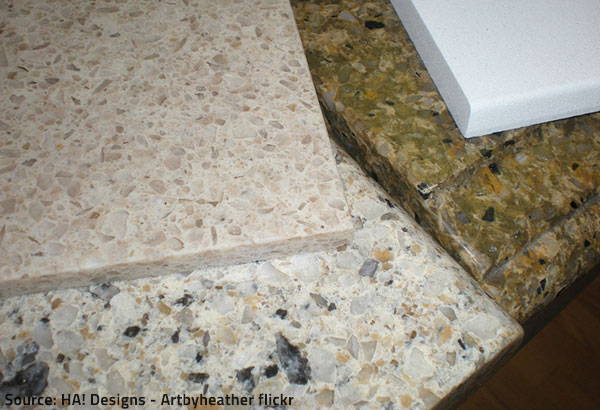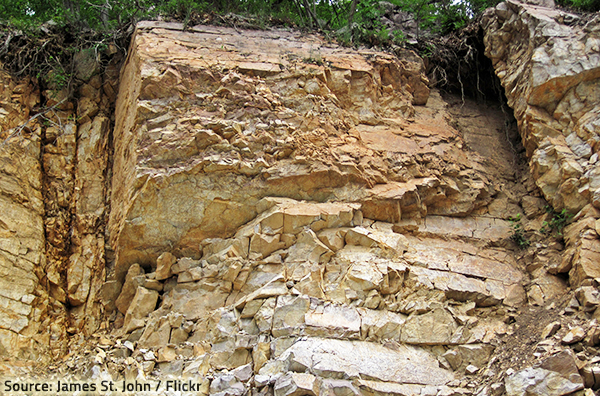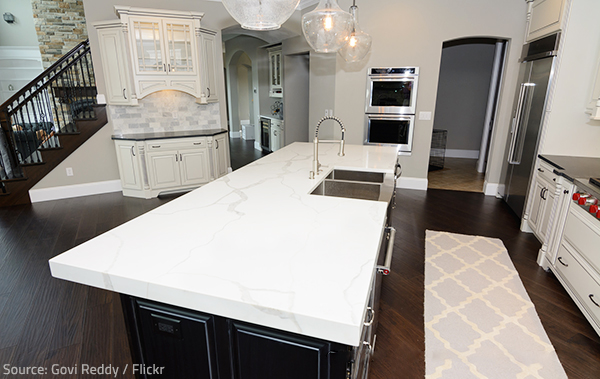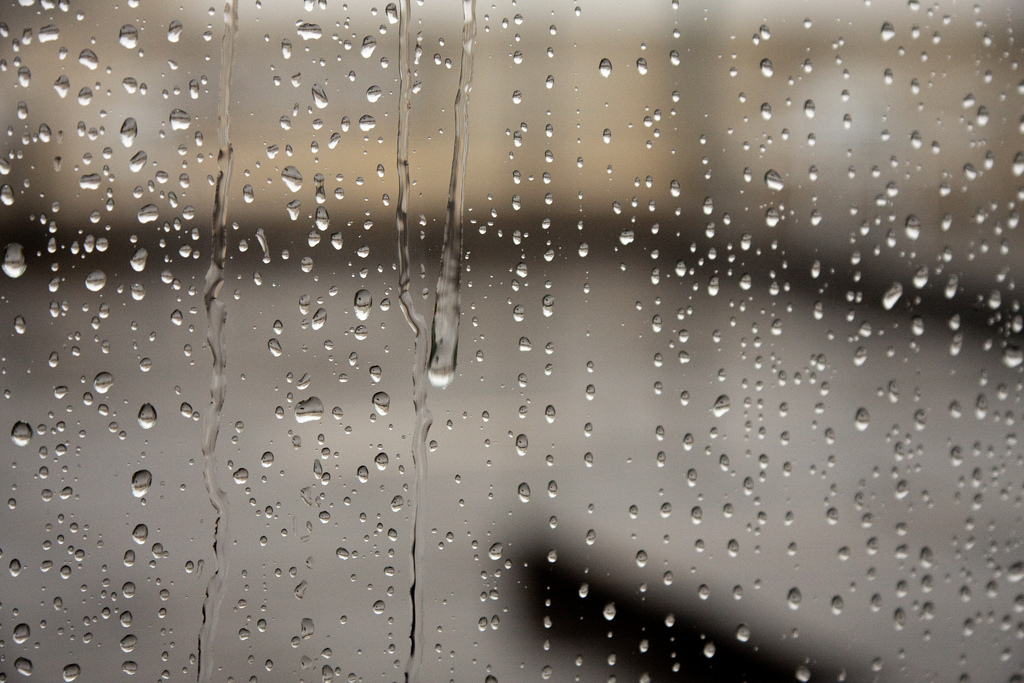Are Quartz and Quartzite the Same Stone?
Similar words are supposed to have similar meanings. This may not always be the case, but far more often than not it is so. Especially when it comes to names and terms – after all, if two things are given similar designations, then they should have a lot of common.
So, when you hear the terms quartz and quartzite, it’s only logical to assume that they mean roughly the same thing. But while the two stones do indeed have many similarities, they’re not the same. Both are durable and beautiful materials, yet they offer significant differences in appearance, maintenanceMaintenance is the routine care, inspection, and repair of a... More requirements, and performance. Both have the mineral quartz as a raw material source, yet they’re formed in a radically different way. Both are excellent choices for kitchen countertops, flooring, and various other applications within the home, but each of them has its own specific advantages and disadvantages.
To be able to make the right choice for your own home improvement project, you need to be well aware of the difference between quartz and quartzite. Here is what you need to know:
What is Quartz?

The look of quartz products is defined by the size of the quartz granules they contain.
Quartz is an engineered material, made of approximately 93% natural quartz granules and 7% polymer resins and color pigments. It is fabricated from natural silicon dioxide and synthetic materials – loose quartz is blended with a binder and a pigment. The mixture is poured in a moldMold is a type of fungus that grows in damp or humid conditi... More and pressed into slabs that are then baked in a kiln at around 200°F, until the resin cures. After cooling down, the slabs are polished to a beautiful shine with a diamond abrasive.
The natural properties of the quartz crystals and the specifics of the engineering process result in a durable surface that is scratch resistant and less vulnerable to chipping and cracking than most natural stones. The thick resin that binds the quartz minerals together creates a non-porous surfaceNon-porous surfaces are surfaces that do not absorb liquids ... More which is very sanitary and easy to maintain. What’s more, the unique manufacturing process allows for a great variety of colors and patterns, as well as for many different finishes and edging options.
What is Quartzite?
Quartzite is a naturally-occurring metamorphic rock that originated as sandstone. The gaps in the sandstone were naturally filled with mineral quartz and over thousands of years the two were fused together under the heat and pressure caused by the tectonic plate compression deep within the earth’s crust. The resulting natural stone, known as quartzite, is extremely hard and beautiful. It is mined in large chunks and sawn into slabs. The surface is then polished and sealed for greater durability.
The peculiarities of its formation make quartzite exceptionally strong and highly resistant to heat and water.
Quartz vs. Quartzite
So, quartz and quartzite are not the same thing, even though both of them contain the mineral quartz (thus, the similar names). But what are the actual differences between the two? Are they comparable to each other in terms of durability, functionality, aesthetic appeal, and price? Which one is more suitable for your particular needs? Read on to find out:
What Are the Similarities Between Quartz and Quartzite?
Despite the fact that quartz and quartzite are completely different materials, they share some common features:

Both quartz and quartzite are excellent countertop materials.
- Remarkable hardness – Even though quartz is a manmade product and quartzite is a natural stone, both are extremely hard – the great heat and strong pressure involved in the formation of both materials (during the fabrication of the quartz slabs and during the natural metamorphic events in the crust of the earth that create quartzite) cause the individual quartz granules to recrystallize and form an interlocking mosaic of quartz crystals. The resulting material is unparalleled in its strength – quartz ranks 7th on the Mohs scale of mineral hardness and quartzite is even harder;
- Great durability – Both materials are very durable and long-lasting. Neither will etch and both withstand wear and tear very well. Quartz is less prone to denting or chipping (because it contains resin which makes it more flexible), while quartzite is more resistant to heat (the resin in quartz is likely to melt when exposed to temperatures above 300°F);
- High aesthetic appeal – While very different in appearance (see below), both quartz and quartzite are extremely beautiful and come in thousands of different color variations and patterns (some of them closely resembling the look of marble or granite with its intricate veining, flecks, and swirls). Both stones allow for custom edges and various finishes – polished, honed, sand blasted, or flamed;
- Use – Due to their great durability and versatility, both engineered quartz and quartzite can be used in a wide variety of indoor projects – kitchen countertops, bathroom vanities, flooring, fireplace surrounds, etc. Quartz, however, is not suitable for outdoor applications as it is vulnerable to abrupt temperature changes (unlike quartzite that can easily withstand harsh weather conditions and provides easy-to-clean, water-resistant, non-skid surfaces that are perfect for paving patios, stairs, and pool decks);
- Price – Quartz and quartzite are comparable in cost – prices begin at about $60 per square foot, but often soar up to $100 or even more. If the job is more complex though, quartzite will cost more than quartz – this is so because the engineered material can be poured into a moldMold is a type of fungus that grows in damp or humid conditi... More to produce any desired shape, while quartzite has to be cut with diamond blades, which takes plenty of time and skill.
What Is the Difference Between Quartz and Quartzite?

Quartzite is mined from the earth, not manufactured in factories.
Both quartz and quartzite are exceptionally durable and highly resistant to wear and tear. Both are very stylish and easy to coordinate with the rest of your home décor. Yet, they have some significant differences that will make one material more suitable for your household than the other:
Origin
As already mentioned, quartzite is a natural stone (a naturally formed metamorphic rock), whereas quartz is an engineered material (quartz slabs are factory-made from ground raw quartz, bound together with resins and pigments).
Quartz can be classified as a crystalline rock and quartzite – as a metamorphic rock.
Appearance
- Quartzite has a soft, elegant look that adds natural charm and high aesthetic appeal to the ambience. As a natural material, it has greater color and pattern variations than quartz. In its’ pure form quartzite is white to gray in color, but the presence of other minerals (iron oxide, silica, carbonate and clay) in the metamorphosed stone results in an incredible variety of patterns and shades – from subtle earthy tones (brown, gold, orange, green and yellow) through gentle pink and red hues to dramatic blues or blacks, with veins like marble or flecks reminiscent of granite. Since it is naturally created, quartzite has a unique spread of color and sparkle throughout the stone. Each slab is one-of-a-kind and the veining and coloring varies from slab to slab – and even within the slab itself;
- Quartz has a sleek, modern appearance that is very popular among contemporary homeowners. It offers a consistent look with little variation and more uniform patterning and coloring than quartzite – quartz is crafted with a controlled appearance, so that the slab has a homogeneous color pattern throughout the entire surface (in fact, the coloration is consistent throughout the material, so if a quartz countertop is scratched or chipped, the color beneath the surface will be exactly the same as the one on the top). The look of quartz products is defined by the size of the quartz crystals they contain – finer granules result in a smooth, homogeneous appearance, while larger crystals create a more flecked look, similar to granite. When it comes to colors, the manufacturing process of quartz slabs allows for an amazing variety of hues and shades, including ones that do not exist in nature. There is no limit to the kind of color pigments that can be used, so quartz countertops are available in a wide spectrum of colors – from fire red and leaf green to pastel beiges and creams, with speckles, flecks and swirls that resemble the delicate veining of granite or marble. As manmade products, quartz slabs and tiles are consistent not only in color and patterns, but in size and thickness as well.
MaintenanceMaintenance is the routine care, inspection, and repair of a... More

Your new quartz or quartzite countertop will add great aesthetic appeal to the ambience and will last for many years.
Both quartz and quartzite products are easy to clean and keep in top-notch condition, but the most important difference between the two is that quartzite countertops need to be sealed for better protection, while quartz ones do not.
Like all natural stones, quartzite is porousPorous describes a material that contains small openings or ... More and must be sealed before use and re-sealed a couple of times per year to help protect the surface from scratching and staining. When properly sealed, quartzite surfaces do not accumulate dust and dirt, so wiping them with a damp cloth once in a while is enough to keep them in excellent condition.
Unlike natural stones, quartz is completely non-porous – the manufacturing process results in a dense, impervious surface that resists staining, corrosion, and bacteria growth and doesn’t need sealing. As a result, quartz makes an extremely practical and highly hygienic surface that is very easy to clean and requires minimal maintenanceMaintenance is the routine care, inspection, and repair of a... More. The non-porous quartz surfaces:
- don’t harbor bacteria, germs, and other harmful microorganisms (such as moldMold is a type of fungus that grows in damp or humid conditi... More, for example);
- don’t accumulate dust and dirt and don’t absorb spills easily.
This makes quartz countertops one of the most sanitary and most low-maintenance countertop options available on the market – all you need to do to in order to clean your quartz countertop is wash it with mild soap and water and wipe it dry.
Good to remember: Not only are quartz products easier to maintain, but they’re also much easier to repairRepair is the act of fixing or restoring damaged property, m... More if damaged.
The small differences between quartz and quartzite in regard to their durability, cost, and usage have already been discussed above.
Quartz and quartzite are two gorgeous options for your home – despite their slight differences, both materials are very durable and stunningly beautiful. It’s up to you to decide which one you like better, but whatever your choice, you can rest assured that your new home feature (be it a countertop, feature wall, flooring, fireplace surrounding, etc.) will look elegant and luxurious for many years to come.












